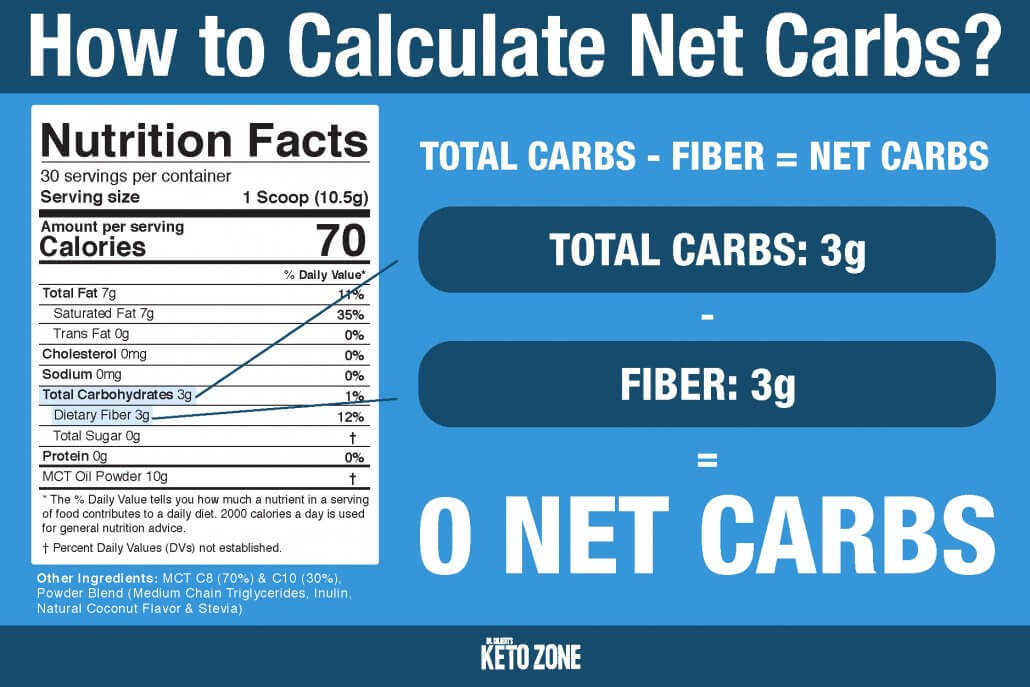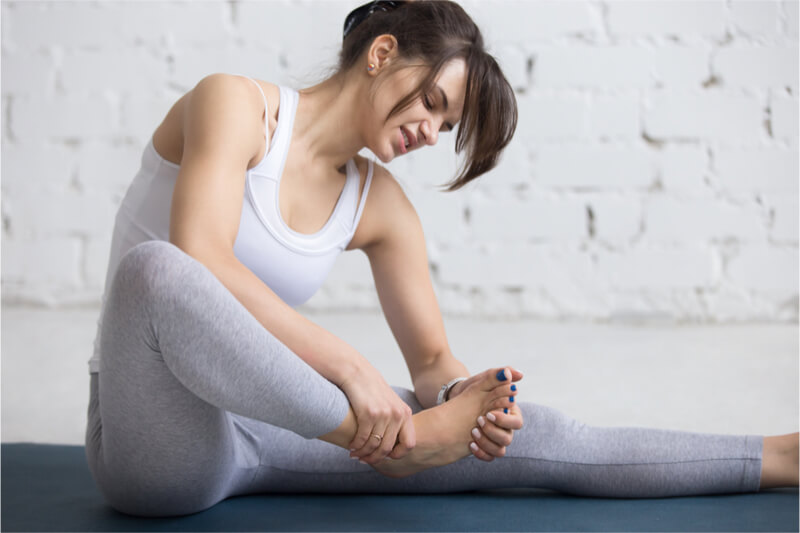Experiencing leg or muscle cramps on a keto diet? You’re not alone! Muscle cramping is a common “side effect” of a ketogenic diet. But thankfully, it’s temporary and easily remedied. Here’s why you might get muscle cramps on keto and two simple ways to handle them, starting today.
Why Muscle Cramps on Keto Happen
Cramps on a keto diet are caused by two simple but important factors:
- Dehydration
- Low electrolytes in your body
During the beginning of a keto diet, when your body is still learning to burn fat for energy, these two things are common.
Your body loses a lot of water weight as it drops its glycogen stores. And with that water, electrolytes are lost too. So increasing your levels of both will help bring things back to normal.
Let’s break down how you can do that.
1. Drink Lots of Water
Drink at least three liters or about half your body weight in ounces of water per day. Preferably filtered or spring water.
You need to replenish water lost during the beginning of the diet and as you enter the Keto Zone. Drinking enough fluids will combat the dehydration that contributes to muscle cramping, as well as fatigue or low energy.
If you get bored of drinking plain water, spice it up a bit by adding a squirt of lemon or lime juice or fruit essence.
2. Consume More Electrolytes
The main electrolytes to be aware of on a keto diet are:
- Sodium
- Calcium
- Potassium
- Magnesium
Low levels of these, which are often flushed from the body with water weight, can cause muscle cramps on keto.
Thankfully, this issue is easily fixed as well. Simply replenish these electrolytes to keep things functioning properly again!
And thankfully, there are a number of easy ways to consume them:
- Use a sugar-free electrolyte supplement that can be added to your water.
- Add sea salt to your water and/or keto foods.
- Have a cup of bone broth with breakfast (or anytime during the day).
- Drink apple cider vinegar with warm water before bed or during the night. It contains calcium and potassium to combat nighttime cramps.
- Supplementing with magnesium at night (look for the spray form, as magnesium is best absorbed topically through the skin)
You can also take our Instant Ketones or Dr. Colbert’s Enhanced Multivitamin, both of which include these nutrients.
Last Resort: Slightly Increase Your Carbs
To get into the Keto Zone, you need to stay at 20 grams net carbs or less per day. And since muscle cramps are part of the induction phase that gets better once you enter the Zone, we recommend staying strict with your carbs.
However, if your cramps are too severe and nothing else seems to help, you can try increasing your carbs slightly to reduce the cramping. Just make sure they’re from whole food sources—no white flours or sugars! And understand that this is a last resort.
Just like with a cheat day, eating carbs to combat cramps is like taking three steps backwards. It’s better to power through, use the two steps above, and find relief on the other side.
And remember that muscle cramps on keto are usually temporary. Keep drinking water and getting plenty of electrolytes, and wait it out. As you enter the Keto Zone and become fat-adapted, your body should even itself out. You’ll feel amazing and forget all about any muscle cramps you had in the beginning!

More Articles From Drcolbert.com Find Out More About Dr.Colbert’s Health Services

Thank you Dr Colbert
I nee to read this article because I am feeling low energy muscle aches thank you for posting this on my email got bless you Dr. Caldwell and your team for keto‘s zone diet
Thank you Dr Colbert
I nee to read this article because I am feeling low energy muscle aches thank you for posting this on my email got bless you Dr. Caldwell and your team for keto‘s zone diet , Thank you so very much , my weight is moving off me
I have tried a few diet programs this one is working for me.
Drink apple cider vinegar with warm water before bed or during the night. It contains calcium and potassium to combat nighttime cramps. How much apple cider vinegar do you take?
I’ve tried doing Keto for seven months, got muscle cramps, then got symptoms of gout, gained weight, decided to stop and go back to Paleo. My thumbs and fingers are still swollen and stiff. I’m drinking tart cherry juice now. I wanted to do Keto and be healthy
How much Magnesium should a 76 yr old woman take, and how much electrolytes should I drink in the course of the day, I really get cramps when I’m trying to sleep it wakes me up and I have to jump out of bed and I can’t tell you how it hurts in the middle of the night with a CPAP machine and tube on your head and arm braces on each arm, Needless to say it’s not pretty, but I’ll do what I have too to get the results I want…..HELP!.
Thank you so much Dr. Colbert. My husband has lost his weight 18lb. I’ve lost 34 but I’ve still had a way to go. Is it normal for the weight loss to slow down or stop for a few days? I was averaging 2 to 3 lb a week but the past 2 weeks in a row I ganed a few ounces.
This happened about 3 months in so I cut my carbs back from 15 to 10. a day. I rarely have 5 g of carbs. I have a keto coffee for lunch and only eat a keto dinner as my meal for the day.
I’ve been cutting back or even out snacks (organic nuts).
After 5 months is this normal?
What do you think I could do to lost the rest of the weight?
I have worked out 3 times a week for about 45 minutes but I cut that out to try and speed up the weight loss, but I still do a 30 minute brisk walk 5 days a week. I skip breakfast to have a 14 to 16 hr. fast. I still do Keto coffee for lunch and try not to snack on nuts in the evening ( but that has been a tough time of day for me).
Can you give me any suggestions?
Thank you!
With Jesus Love and Joy,
Barb
I am having not so much cramps as my lower calves just acne. I am moving so lots of standing etc. But was actually hoping for energy not this. I am drinking coffee with my powder in the AM and tea in the evening with collagen.. Just got the slender formula system but no info with it so not sure the best way to utilize it , i am at a stand still gaining and loosing the same pound for last two or three weeks. Any suggestions am eating mostly veggies in salads, pecans and tons of pork rinds .